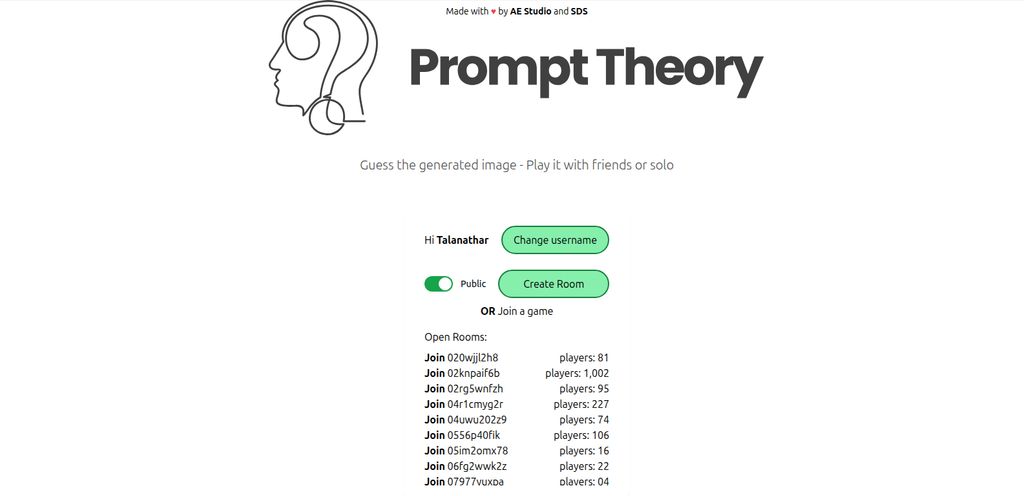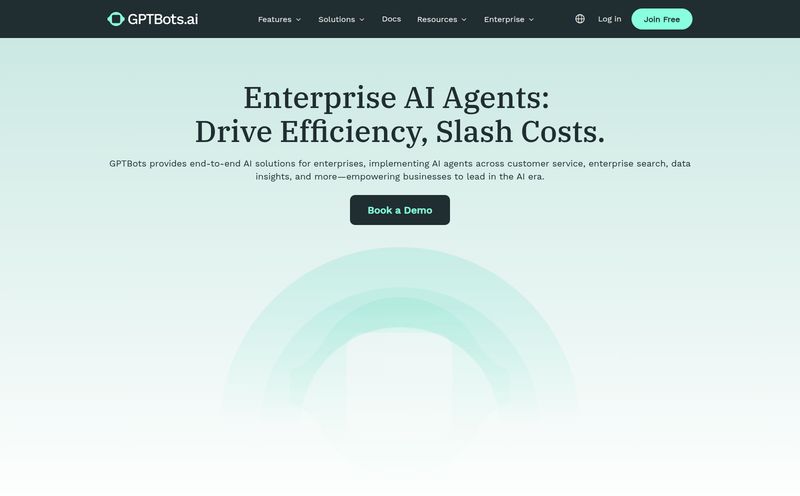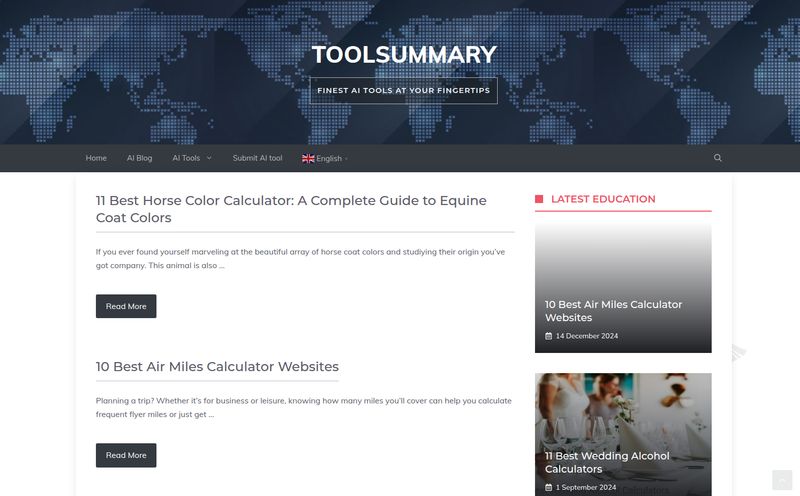The last couple of years have been an absolute explosion of AI tools. It feels like every week there’s a new platform that promises to write your emails, code your website, or, in this case, turn you into the next Picasso. As someone who’s been in the digital marketing and content trenches for years, I've seen a lot of hype. A lot of it. So I'm naturally a bit of a skeptic.
But then a tool comes along that’s just… fun. It's simple, it's fast, and it lowers the barrier to entry so much that anyone with a phone and an idea can start creating. That's the vibe I get from WOMBO Dream. It’s not trying to be the most complex, photorealistic engine on the market. Instead, it feels like it’s handing you a magic crayon and telling you to go nuts. And I gotta say, I’m here for it.
So, What is WOMBO Dream, Really?
At its core, WOMBO Dream is an AI art generator. That's the fancy term. In human speak? You type in a few words describing an image you have in your head, pick an art style, and a clever little robot artist paints it for you in seconds. Think of it less as a complex piece of software and more like a direct line to a surrealist painter who works on commission and is powered by caffeine and algorithms.
You can ask for “a cyberpunk cat meditating in a neon-lit alley” or “a haunted forest made of candy,” and it will do its absolute best to bring that weird, wonderful concept to life. It’s a pure text-to-image platform, meaning your words are the only raw material you need. No drawing skills required. None. Zip. Nada.
Getting Started Is Almost Too Easy
The first time I landed on the WOMBO Dream site, I was expecting a complicated dashboard. You know the type. Tons of sliders, settings, and jargon that makes you feel like you need an engineering degree. But there was none of that. It’s refreshingly simple.
You’re greeted with two main boxes:
- A prompt box: This is where you type your masterpiece of an idea.
- A style selector: A gallery of options like Ghibli, Psychedelic, Synthwave, or just a simple No Style.
You type, you click, you wait maybe 10-20 seconds, and BAM. Art. It's so straightforward it almost feels like a trick. I spent my first hour just throwing random phrases at it to see what would stick. "A sentient avocado giving a TED Talk." Yep, it did that. "A library at the bottom of the ocean." It did that too, and it was surprisingly beautiful.

Visit WOMBO Dream
The Good, The Weird, and The Wonderful
After playing around for a while, a few things really stood out to me. This isn't just another tech toy; it has some seriously practical upsides.
The Need for Speed
It's fast. Seriously fast. In the world of AI art, where some platforms can leave you staring at a progress bar for minutes, WOMBO's near-instant gratification is a huge plus. This makes it perfect for rapid ideation. If you're a blogger like me who needs a quick, abstract featured image for an article, or a social media manager looking for a unique background graphic, you can generate a dozen options in the time it takes to brew a cup of coffee. That's a workflow game-changer.
A Style for Every Mood
The variety of art styles is where a lot of the magic happens. The same prompt, like "a lone astronaut on a desert planet," can be transformed dramatically just by switching the style. In Etching, it’s moody and classic. In Malevolent, it's a horror movie poster. In Synthwave, it's an 80s album cover. This built-in flexibility encourages experimentation and can often take your initial idea in a direction you never would have thought of on your own.
From Vague Idea to Visual Reality
This is the core appeal, isn't it? We all have these fleeting, visual ideas. WOMBO Dream acts as a net to catch them. It’s a tool for non-visual thinkers to express themselves visually. It’s also an incredible cure for creative block. When I’m stuck for an idea, I sometimes just feed the topic of my next article into the prompt and see what the AI spits out. More often than not, it generates something that sparks a new angle or a fresh perspective. It’s like a creative partner that never gets tired of your weird requests.
Where The Dream Gets a Little Hazy
Of course, no tool is perfect. The same simplicity that makes WOMBO Dream so approachable is also the source of its limitations. This isn't necessarily a bad thing, but it's something you need to be aware of.
Letting Go of the Reins
If you're a creative professional who needs precise control, this might not be your go-to tool. You can’t tweak the composition after the fact, adjust the lighting, or tell the AI, “make that cat’s hat just a little bit bigger.” What you get is what you get. It’s more of a slot machine for art than a fully-stocked digital easel. You pull the lever (write the prompt) and see what comes out. For control freaks (I say that with love!), this can be frustrating.
The AI's 'Creative' Interpretation
Ah, the beautiful chaos of AI. Sometimes, WOMBO Dream will create something that’s pure genius. Other times, it'll give you something that's… well, a bit nightmarish. I once asked for “a person holding a bouquet of flowers” and got a person whose hands had morphed into the bouquet. It was unsettling. The AI can misinterpret your prompt or blend concepts in bizarre ways. This randomness is part of the fun, but it means you might have to generate a few duds before you land on a winner.
Let's Talk Money: What's the Price of a Dream?
Here’s the great news. You can start using WOMBO Dream for free. The app is free to download, and you can generate images on their website without pulling out your credit card. This is fantastic for casual users and anyone just wanting to dip their toes in the AI art pool.
Naturally, there's a paid version. WOMBO Dream offers a Premium subscription. From what I can gather, this gets you some pretty decent perks:
- Faster Generation: Your creations get priority in the queue.
- Exclusive Styles: Access to new and premium art styles not available to free users.
- More Creations at Once: Generate up to four variations from a single prompt.
- No Ads: A cleaner, more focused experience.
The pricing is usually offered on a weekly, monthly, or yearly basis, which is pretty standard for this kind of app. For most people, the free version is more than enough to have a blast. But if you find yourself using it constantly for work or personal projects, the premium tier is probably worth a look.
Who Is WOMBO Dream For?
So, who should be using this? In my professional opinion, WOMBO Dream is perfect for a few key groups:
- Content Creators and Bloggers: Need a unique blog header or social media post in a pinch? This is your tool.
- Hobbyists and the Curious: If you just want to see what AI art is all about without a steep learning curve, look no further.
- Artists Seeking Inspiration: It's a fantastic tool for brainstorming and breaking through creative blocks.
- D&D Dungeon Masters: I've heard from so many DMs who use it to quickly generate character portraits or scenic art for their campaigns. Genius!
Who is it not for? Probably professional graphic designers or digital artists who require pixel-perfect control and high-resolution outputs for commercial print work. For that, you’d probably look at more powerful, and complex, platforms like Midjourney or Stable Diffusion.
Frequently Asked Questions About WOMBO Dream
Is WOMBO Dream actually free?
Yes, the core features of WOMBO Dream are free to use. You can generate art without paying. There is an optional Premium subscription that offers benefits like faster generation, more styles, and an ad-free experience.
Can I use the art I create for commercial purposes?
This is a tricky one and a hot topic in AI art. According to WOMBO's Terms of Service, for personal use, you're generally good to go. For commercial use, the rules can be more complex and often require a paid subscription. It's always best to check their latest terms before using an image for business purposes.
How is WOMBO Dream different from Midjourney or DALL-E 3?
The main difference is simplicity versus power. WOMBO Dream is incredibly user-friendly and fast, designed for quick, stylized creations. Platforms like Midjourney and DALL-E 3 are more powerful, capable of generating highly realistic and detailed images, but they come with a steeper learning curve and are generally paid services.
What kind of prompts work best?
I find that being descriptive and slightly poetic works wonders. Instead of just “cat,” try “a fluffy ginger cat, curled up sleeping in a sunbeam, impressionist painting.” Adding details about the subject, the setting, and the artistic style you're imagining will give the AI more to work with and produce much better results.
Does WOMBO Dream save my creations?
Yes, if you create an account, your artwork is saved to your profile. This is super helpful for going back to find an image you loved or seeing the evolution of your prompts. You can also easily download the images to your device.
Final Thoughts on My Little AI Art Adventure
Look, WOMBO Dream is not going to replace human artists, and it's not the most powerful AI image generator out there. But that's not its goal. Its mission is to make art creation accessible and, dare I say it, joyous.
It's a fantastic entry point into a fascinating new technology. It’s a tool that can augment your creativity, break you out of a rut, or just provide a few hours of fun making utterly bizarre pictures. For a tool that’s largely free, the value you get is pretty incredible. So go on, give it a try. What’s the weirdest thing you can dream up?



